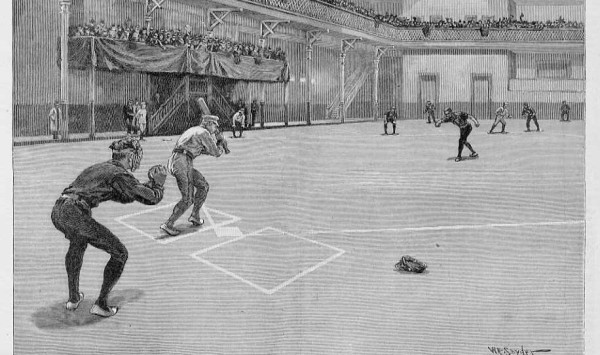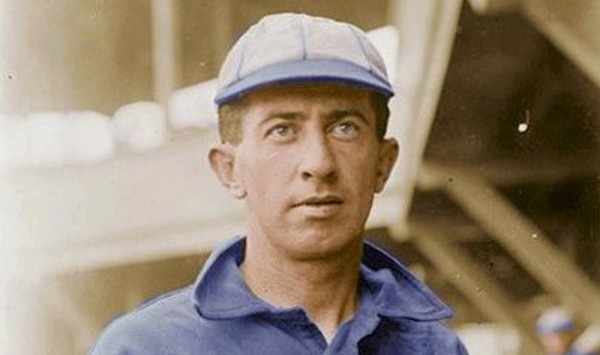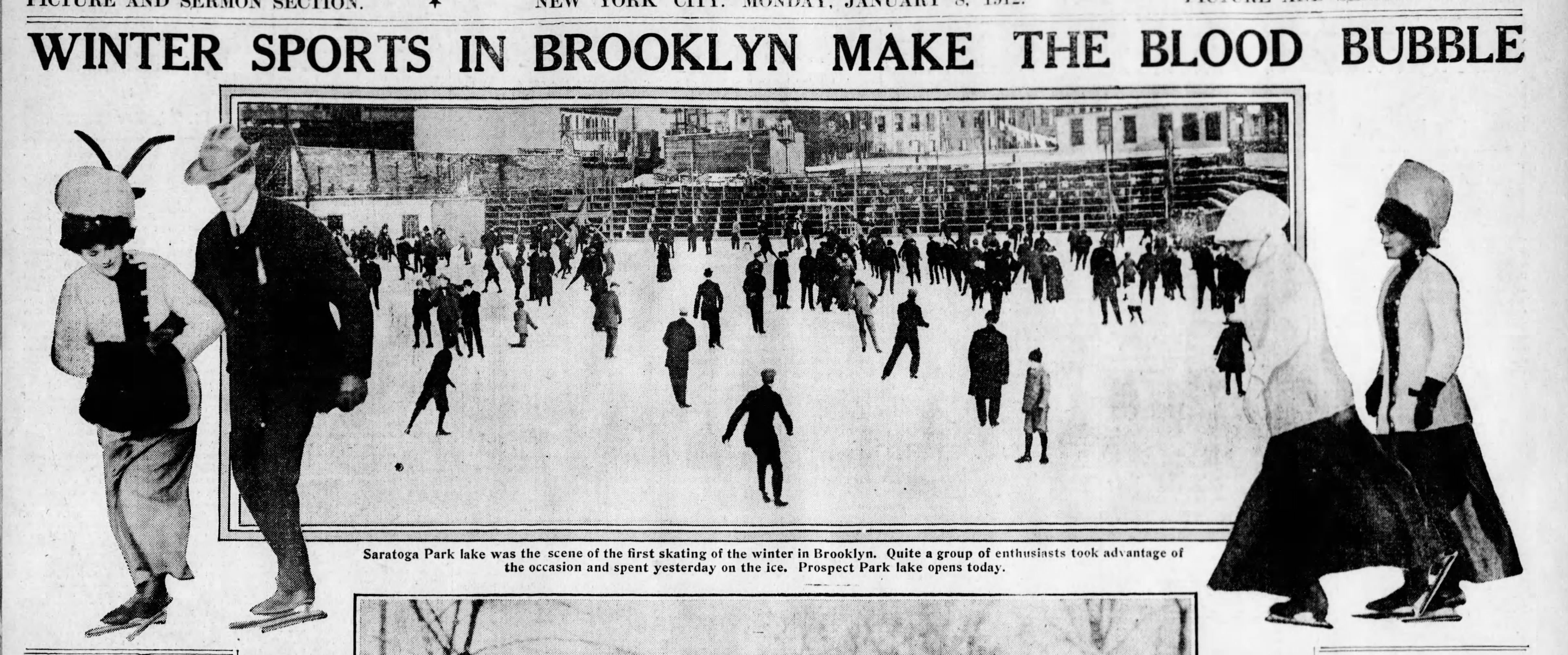INSIDE SUMNER ARMORY – BASEBALL! (1895)

******************************************************************************************************************************** Brownstone Detectives investigates the history of our clients’ homes. The story you are about to read was composed from research conducted in the course of one of those investigations. Do you know the history of YOUR house? ******************************************************************************************************************************** Back in the day, in addition to drilling the troops, our national guard reserve units used to utilize our armories the way we all hope they’ll be used again one day – for exercise and fitness. Here at the 13th Regiment Armory (formerly known as the Sumner Armory on Sumner Avenue [now known as Marcus Garvey Boulevard] between Jefferson and Putnam Avenues), a number of the men chose up sides and played a game of baseball – inside. By the mid 1870s, “baseball already was popular in most big eastern cities and remained so throughout the nineteenth century,” noted “The Great Encyclopedia of Nineteenth-Century Major League Baseball” By David Nemec. “The ball was softer, the fielders never wore gloves, the bases were closer together and sliding was taboo–otherwise spectators saw much the same display of skills they did during the outdoor season.” Views of the armory (which was built in 1891, according to Save Bedford-Stuyvesant, in order to replace an armory in Flatbush) from the outside are all too easy to come by. But shots like these (drawings, rather), depicting the layout of the structure from the inside, appear much less often. Originally, according to the New York Times, “(i)nside the headhouse, the administrative section at the front of the armory, […]
THE “GREAT UMPIRE” FANS WEE WILLIE (1922)

******************************************************************************************************************************** Brownstone Detectives investigates the history of our clients’ homes. The story you are about to read was composed from research conducted in the course of one of those investigations. Do you know the history of YOUR house? ******************************************************************************************************************************** When we research the histories of our clients’ homes, we inevitably uncover stories that tell part of the narrative of our neighborhoods. Today, we present a short piece on a ballplayer who was once so famous – and such a great player – that he was nicknamed “the Brooklyn Astor” for what he was paid to played for a Brooklyn ball club. This was Wee Willie “Hit ’em, where they ain’t” Keeler who predicted his death at moments after the strike of midnight on New Years Eve. ************************************************************************************************ Hall of Famer Wee Willie Keeler, known for his “hit ‘em where they ain’t” strategy, was “born and bred” in the “Eastern District” of Brooklyn. As a matter of fact, he lived at two particular addresses – and went to school and played ball at another two – all within today’s Bedford-Stuyvesant. Keller, who played primarily for the Brooklyn Superbas and the Baltimore Orioles from 1892-1910, was referred to as the Brooklyn Millionaire when he retired. Keeler had been the first ballplayer to be paid $10,000 a year. He died, though, a pauper, living in a dim second floor apartment at 1010 Gates Avenue and having never married or sired a child. In ill health toward the end of his life, he grew […]
THE BLOOD BUBBLING IN SARATOGA FIELD

(The picture above shows one of the last years – 1912 – that Saratoga Field was used for skating – or any sports, for that matter – as the entire lot would be developed later that year. The image shows the “first skating” of 1912 in Saratoga Fields. Brooklyn Daily Eagle, Mon., 8 January 1912.) After Saratoga Park was built, the block due east of it – formerly used as a the horse market which sat across the street from the Halsey streetcar stables – became know as Saratoga Fields. This large lot which abutted Broadway, Halsey and Macon, became the stand-in location for circuses through about 1905, and then for assorted sporting events afterwards through early 1912. Because of its proximity to Saratoga Park, though, for a number of years after the park’s construction, Saratoga Field continued to be referred to as Saratoga Park. Run by the Saratoga Amusement Company (for circuses and assorted sports from the early 1890s), they had two main draws, from the people living in the community, to pay the rent. In the winter, they provided skating facilities to the masses, by flooding the field and making a huge outdoor skating rink, which was extremely popular throughout the winter. In the summer, the company improved the lot for use by semi-professional baseball teams, which flourished in this part of Brooklyn. There were countless ball teams from the area which vied to defeat one another on a daily basis – and the competitions were covered keenly […]